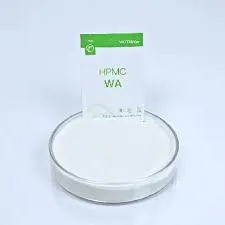
Dec . 07, 2024 03:26 Back to list
The Process of Producing Hydroxyethyl Cellulose and Its Applications
How is Hydroxyethyl Cellulose Made?
Hydroxyethyl cellulose (HEC) is a water-soluble polymer derived from cellulose, a natural polymer obtained from plant cell walls. It has a wide range of applications, including use in the pharmaceutical, cosmetic, and construction industries. To understand how HEC is made, it is essential to grasp the fundamental processes involved in its synthesis, which includes the derivatization of cellulose, purification, and drying.
Extraction of Cellulose
The production of hydroxyethyl cellulose starts with the extraction of cellulose from natural sources, typically wood or cotton. The cellulose extraction process involves several steps
1. Preparation of Raw Material The first step is to prepare the raw material by chopping or grinding the wood or cotton into smaller pieces.
2. Chemical Treatment The ground material undergoes chemical treatment to remove lignin, hemicellulose, and other impurities. This is usually achieved through alkali treatment using sodium hydroxide (NaOH) or other chemicals.
3. Bleaching (if necessary) Depending on the desired whiteness and purity of cellulose, a bleaching process using chlorine or hydrogen peroxide may follow to obtain purified cellulose fibers.
Derivatization Process
Once the pure cellulose is obtained, it undergoes a chemical modification process called derivatization, which transforms cellulose into hydroxyethyl cellulose
. This process involves the following key steps1. Esterification and Etherification In this step, ethylene oxide, a commonly used reagent, is reacted with the hydroxyl groups of cellulose. The reaction occurs in an alkaline medium and leads to the formation of hydroxyethyl groups that attach to the cellulose backbone, resulting in hydroxyethyl cellulose.
2. Controlling the Degree of Substitution The level of hydroxyethyl substitution should be carefully monitored and controlled since it affects the properties of the final product. The degree of substitution (DS) is a critical factor, determining the solubility, viscosity, and other performance characteristics of HEC. The DS can be adjusted by altering the amount of ethylene oxide used during the reaction.
3. Temperature and Reaction Time The temperature and duration of the reaction also play a significant role in determining the properties of HEC. Higher temperatures and longer reaction times typically lead to higher substitution levels and viscosity.
how is hydroxyethyl cellulose made

Purification and Precipitation
Following the derivatization process, the resulting mixture often contains unreacted materials, catalysts, and by-products. To isolate and purify hydroxyethyl cellulose, the following steps are typically employed
1. Neutralization If an alkaline catalyst was used, it must be neutralized. This is usually done by adding an acid, like acetic acid, to the mixture.
2. Precipitation The purified HEC can be precipitated from the reaction mixture by adding a non-solvent, such as ethanol or isopropanol. This causes HEC to form a solid precipitate, which can then be collected through filtration.
3. Washing and Drying The collected precipitate is washed to remove any residual impurities or solvents and then dried to yield the final hydroxyethyl cellulose product.
Final Processing
The dried hydroxyethyl cellulose is then milled into a fine powder or flakes, depending on its intended application. It is packaged and stored under controlled conditions to prevent moisture absorption, which could affect its quality and performance.
Applications of Hydroxyethyl Cellulose
The versatility of hydroxyethyl cellulose makes it valuable in various industries. In pharmaceuticals, HEC acts as a thickening agent and stabilizer in ointments and gels. In cosmetics, it is used in skincare products, shampoos, and conditioners due to its excellent film-forming properties. The construction industry also relies on hydroxyethyl cellulose to improve the workability and water retention of cement-based products.
Conclusion
In conclusion, hydroxyethyl cellulose is synthesized from natural cellulose through a series of meticulous processes involving derivatization, purification, and drying. Its diverse applications across various industries highlight the importance of understanding its production process and the factors that influence its properties. As research continues to evolve, the production methods and applications of HEC are likely to expand, contributing further to its significance in modern science and technology.
-
Versatile Hpmc Uses in Different Industries
NewsJun.19,2025
-
Redispersible Powder's Role in Enhancing Durability of Construction Products
NewsJun.19,2025
-
Hydroxyethyl Cellulose Applications Driving Green Industrial Processes
NewsJun.19,2025
-
Exploring Different Redispersible Polymer Powder
NewsJun.19,2025
-
Choosing the Right Mortar Bonding Agent
NewsJun.19,2025
-
Applications and Significance of China Hpmc in Modern Industries
NewsJun.19,2025







